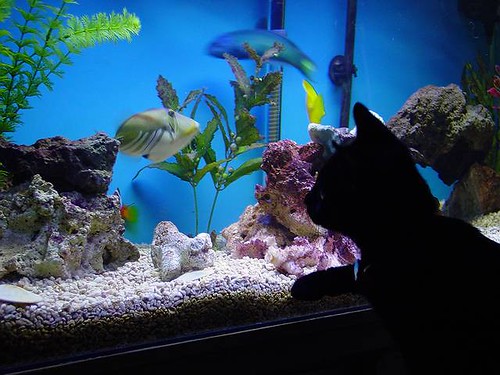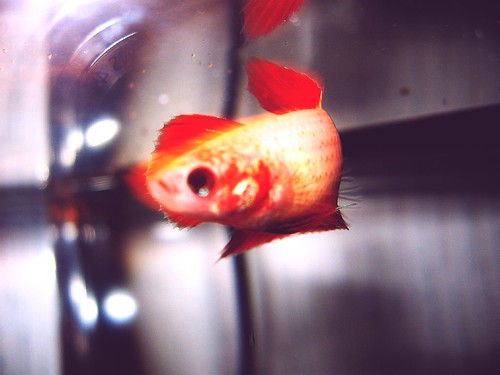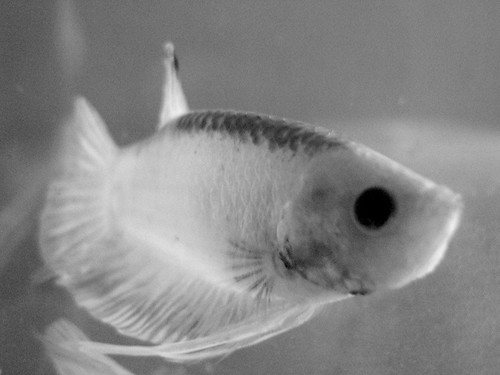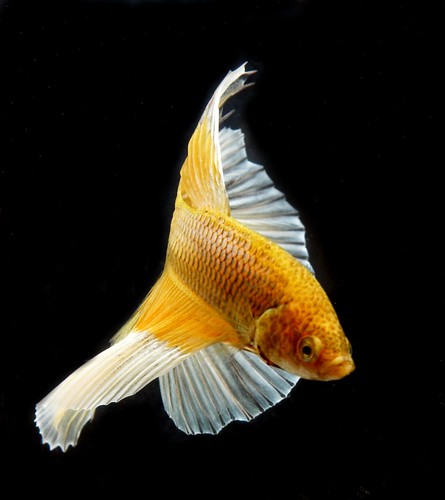Dear Nippyfish readers,
Just a quick announcement. In addition to Nippyfish: A Betta Blog I have started a second blog dedicated to natural and holistic pet care called, BarePaws. I know a lot of you have dogs, cats, birds and other fury and scaly creatures at home so feel free to check it out and enjoy.
http://barepaws.wordpress.com/
Regular postings on Nippyfish: A Betta Blog will continue but won't be as frequent as they were over the past couple of years. Many of you may have noticed that post frequency has fallen to about once a week or so over the last couple of months and that's about where it will stay for awhile at least.
As always feel free to write to me with your Fighting Fish questions at betta[at]nippyfish.net
Thanks for all your support and I hope you will enjoy the BarePaws in addition to Nippyfish: A Betta Blog and Nippyfish.net.
Respectfully yours,
Christie
Nippyfish.net
BETTA SPLENDENS GENERAL CARE, ILLNESS & DISEASE INFORMATION, AQUARIA ARTICLES, BOOK & PRODUCT REVIEWS AND MORE. A PLACE FOR ANYONE WHO LOVES SIAMESE FIGHTING FISH AND THE AQUARIUM HOBBY.
Friday, August 24, 2007
Nippyfish Introduces BarePaws; A New Blog!
Female Betta: Eggs Causing Lethargy
YC wrote,
Hi Christie! I have a quick question for you. When female bettas are
pregnant with eggs, and a male is no longer in sight, do they become
lethargic and have trouble eating? I was wondering how much energy reabsorption of the eggs cost them.
A: Well, my specialty is general health and not breeding so I'm afraid I can't say exactly how lethargic females get when full of eggs. As much as I would LOVE to be breeding regularly I have really done just a little, mostly just to gain knowledge. The females I have bred really haven't gotten all that big and my breeding success... well I haven't had any. :P
That said, the extra weight and pressure, and expended energy used to reabsorb the eggs could certainly lead to some lethargy. One thing you can do to help speed up her metabolism and thus increase her appetite and the rate she reabsorbs the eggs is to slowly raise the water temperature to about 80F (26.5C). If you're not already, try feeding easy to digest foods that won't absorb a lot of water like daphnia, blood worms and brine shrimp. These tasty bits may encourage her to eat and will help give her the energy she needs to reabsorb those eggs.
Wednesday, August 15, 2007
Older Bettas & Dropsy
Q: RSB wrote,
My betta's name is Nemo. I have had him for about three and a half years now. He has been sick for about two weeks. He is rather lazy and sluggish and usually sits at the bottom of his bowl. He has a big loss of appetite and hasn't really eaten anything for like two weeks. Just today, I noticed that his scales are protruding out a little bit. I read somewhere that protruding scales are a sign of dropsy. I also read that if a betta has dropsy, he usually has a bubble under his abdomen that makes him look pregnant, but my fish has no bubble. He just seems very sad and depressed.
Here is some more information:
1. I keep my fish in a fish bowl that carries about a gallon of water.
2. No, I have not tested for ammonia.
3. I have not tested him for nitrate.
4. I have not tested the pH either.
5. I am not positive on the temperature of the water. It seems a little cold. I know the water is supposed to be at about 78 degrees. I just tested his water to see if it was warm but it doesn't seem warm enough for him. It seems like it's between 70-75 degrees. I am not sure how to check the exact temperature of the water, so if you would know how, please tell me.
6. My parents change his water once a week. They pretty much change four fifths of his water.
7. We just put in about 6 drops of Aqua Safe water conditioner every time we change his water.
8. I feed him the hikari pellets. Usually, I would feed Nemo every time I saw him come up to the top of his bowl and I would see him staring at me. On average, I would feed him about 5-6 pellets a day.
9. He has no tank mates.
10. No, the tank is not planted.
11. (refer to paragraph above)
So what do you recommend I should do? Should I get him some medication or should I just focus more on the temperature of the water?
Thank you for taking the time to help out Nemo. He and I will really appreciate the help.
A: I'm sorry to hear about poor little Nemo. Unfortunately protruding scales is the most common symptom of Dropsy. A swollen abdomen, as you mentioned, is also very common but fish with Dropsy don't necessarily show both symptoms. If yours has pineconing scales then he almost definitely has dropsy.
Dropsy itself is not a disease but a symptom that can be caused by several things including a bacterial infection, virus or even parasites. It's very common in tropical fish, especially Betta splendens and sadly it is usually fatal. Dropsy can affect Bettas of any age. If you have had Nemo for 3 1/2 years he is likely about 4 years old or even as old as 4 1/2 years, which is getting up there in Betta years. It isn't unusual for older fish to become susceptible to illnesses as their immune systems weaken from old age. I also lost an older Betta to this terrible illness last year.
The only thing you can do in the later stages of Dropsy is to keep the water clean, warm and stable. To monitor your water temperature you can buy an aquarium thermometer for as little as $1 - $2 at any local fish store.
To learn more about Dropsy visit the Dropsy page.
I wish you all the best and will keep you and Nemo in my thoughts.
Labels:
bacteria,
betta,
Betta splendens,
dropsy,
parasites,
Siamese fighting fish,
temperature,
virus
Tuesday, August 7, 2007
Heating Betta Bowls
AK wrote,
Hey there, Just stumbled across your website and i think its great. I am a first time owner and am so excited. We named him Jean-Michel, after the famous eighties art star:) So we did decide to go with a 1 gal. bowl. I understand that is a little small now and will be changing soon, but for now I wanted to know if there are any recommendations for keeping the bowl heated? The water reads at about 75, but if the whether cools off... I will be going to get a pH kit this week too. Thanks for the site.
A: Thanks for writing in and congratulations on your first Betta fish. Small fish bowls can be pretty difficult to maintain a stable, warm temperature. As you mentioned, the best way to keep the temperature stable is to increase the water volume, which will slow the rate that the temperature fluctuates. In the meantime I recommend placing the bowl in a warm location away from drafts. I have heard some people keep their bowls on top of the refrigerator or in the bathroom. Unfortunately there are no aquarium heaters made for bowls as small as one gallon and placing small bowls on a reptile mat or heating pad can quickly cause the heat to raise to unsafe levels. If you can move him to a larger container between 2 and 5 gallons then you open up other options like a mini heater.
One common mistake aquarists make when heating small bowls is to use a lamp light to warm the water. This method creates several dangers including raising the temperature too quickly, too high, and creating drastic, dangerous fluctuations when the light is turned off at night.
While not ideal, it will be better for your fish to be kept at a slightly cooler temperature that is stable then one that is warmer but fluctuates.

Subscribe to:
Comments (Atom)



